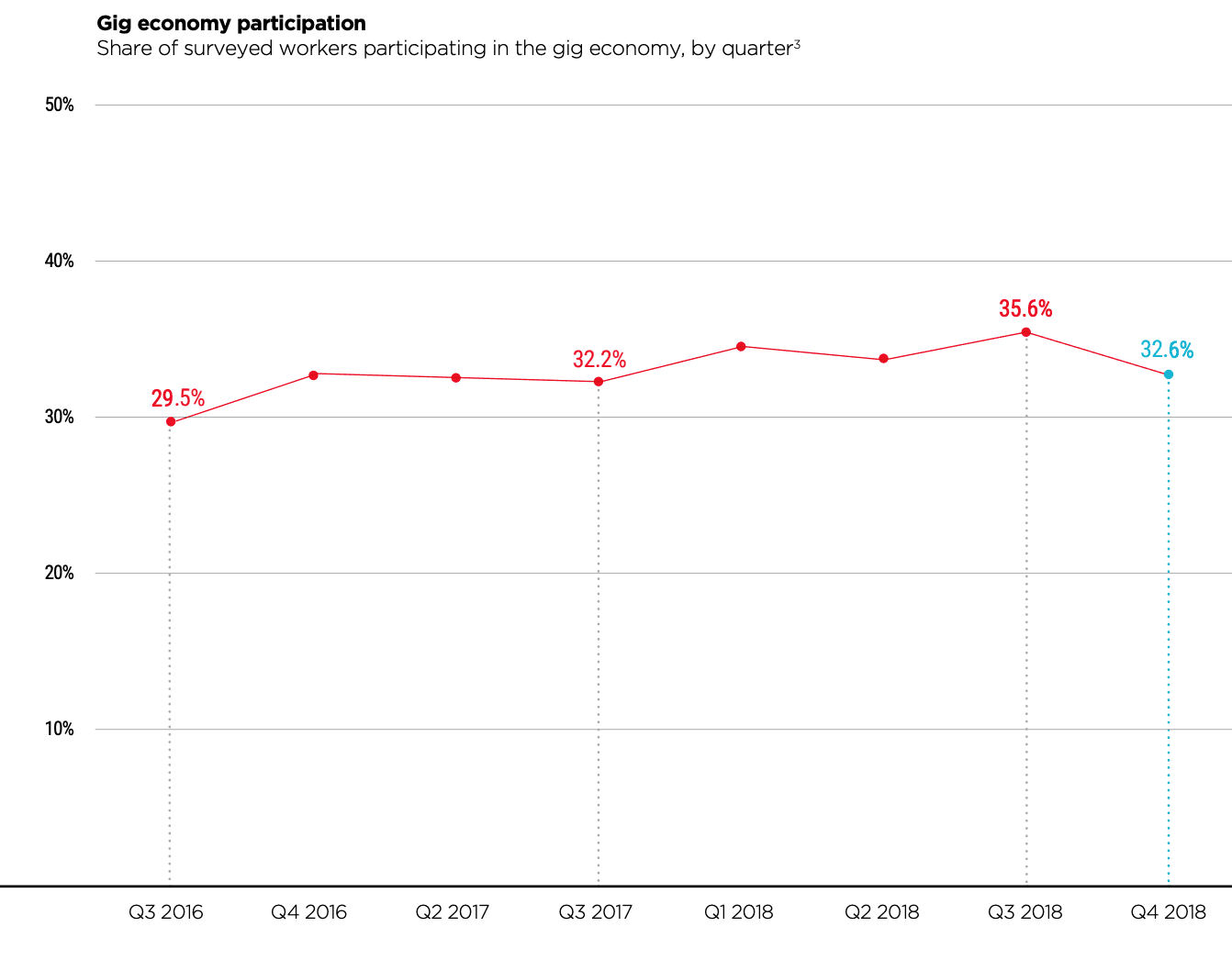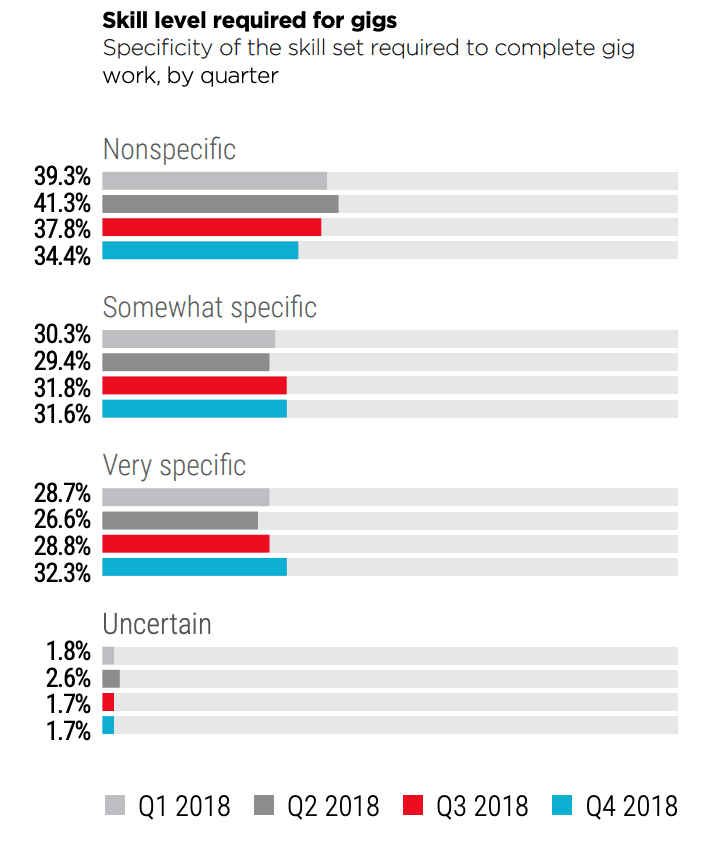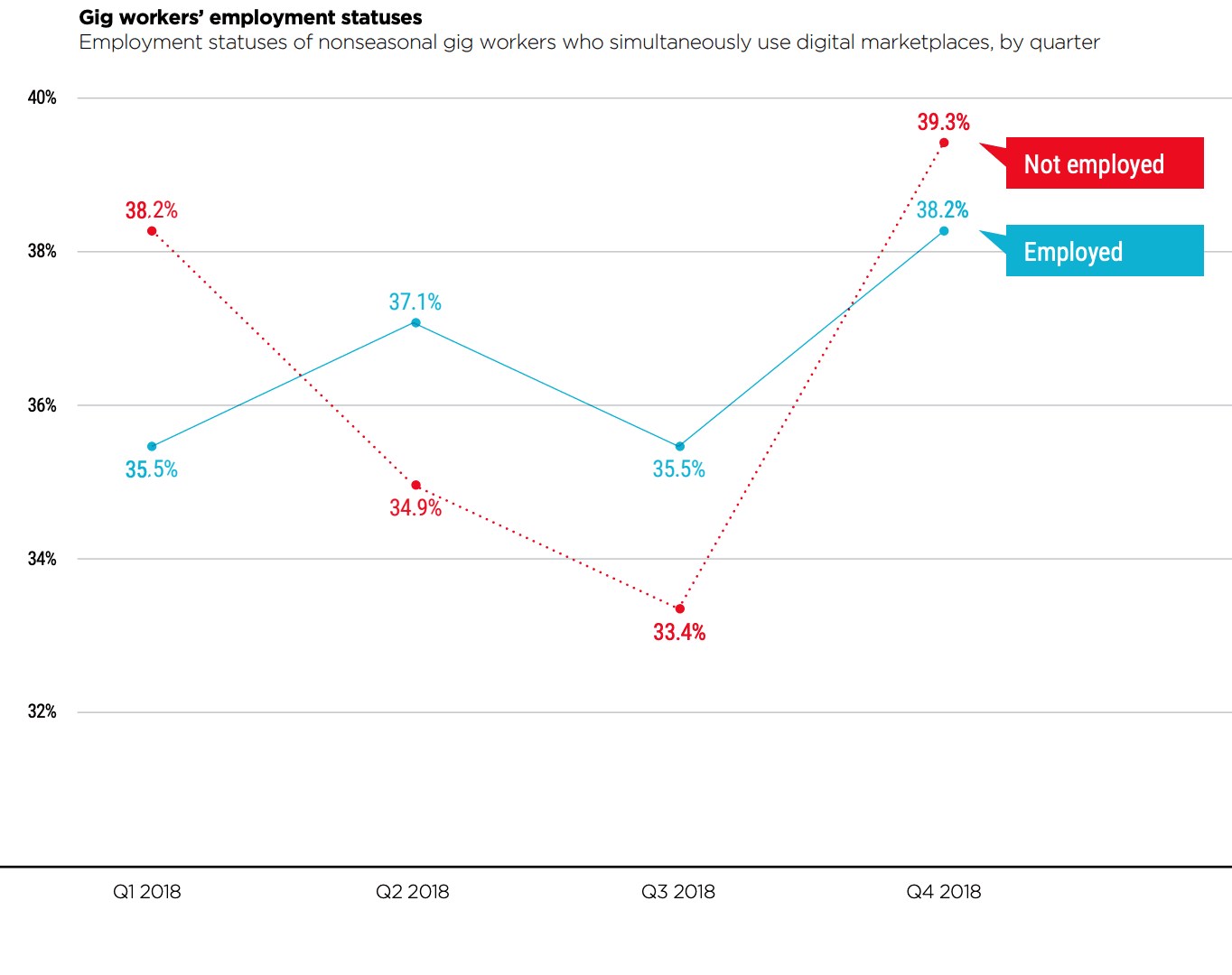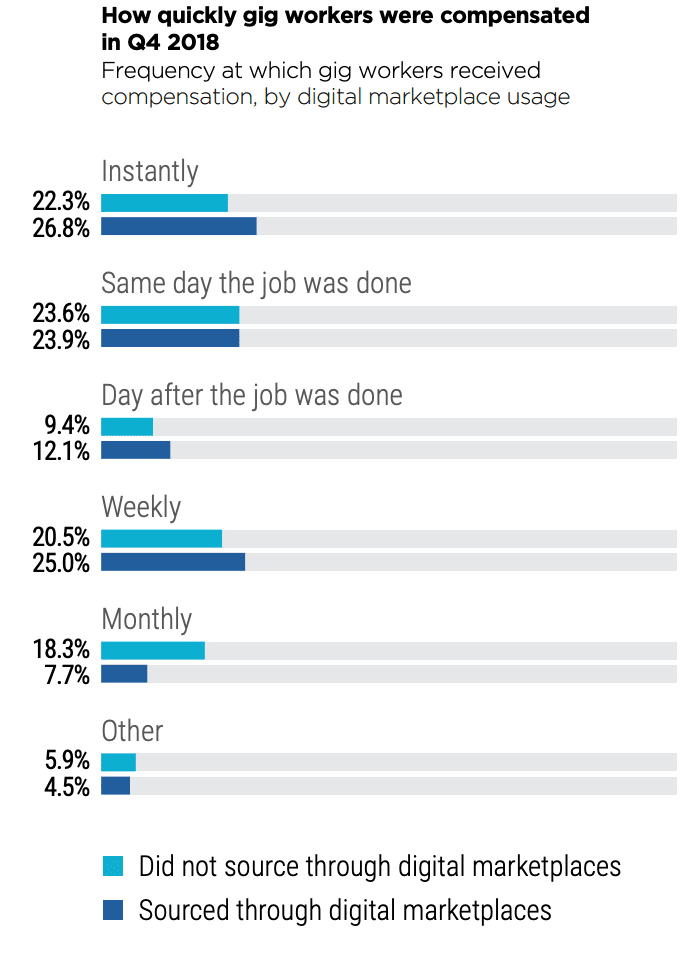
What is the state of the jobs market in the U.S.? It all depends upon who you ask.
ADP’s recently released monthly payroll report forecasted strong private sector hiring, but Moody’s begs to differ. Moody’s chief economist says ADP has inflated its report of 275,000 jobs and will be closer to 175,000 to 200,000 in a government jobs report being released later this week.
Whether these job creation figures are accurate or not, there’s no question that the rise of gig work is having an impact on the economy.
In collaboration with Hyperwallet, PYMNTS produced The Gig Economy Index to gather insights into the state of this growing industry. According to the April 2019 report, it is estimated that gig workers accounted for more than $1.4 trillion of total U.S. income in 2018.
That translates to more than one-third (35.6 percent) of consumers participating in the gig economy in Q3 2018, the highest number since Q3 2016.

High employment levels are having an impact on the demographic makeup of gig economy participants. In Q4 2018, gig workers were highly skilled. That’s because available jobs demand it; 32.3 percent of gig workers needed “very specific” skill sets to perform their work in Q4 2018, a gradual rise over Q1 2018.

There has also been a shift in the share of gig workers seeking seasonal employment. That figure decreased from 35.6 percent in Q3 2018 to 32.6 percent in Q4.
As certain sectors have experienced wider economy employment increases, gig economy participation in those sectors has gone down. For instance, in Q4 2018 construction added 52,000 jobs, according to the Bureau of Labor Statistics (BLS). At the same time, related gig work saw a decrease — from 4.2 percent in Q3 2018 to 3.2 percent in Q4.
Digital marketplaces are playing a role in how the gig economy is changing. Nonseasonal gig workers rely on digital marketplaces far more than seasonal gig workers.
In Q4 2018, 38.4 percent of nonseasonal gig workers used digital marketplaces while just 16.4 percent of seasonal workers did in that same time period.
Nonseasonal gig workers also have higher educations and higher incomes. In Q4 2018, 37.6% of nonseasonal gig workers who also used digital marketplaces had graduate degrees and 40.0 percent earned more than $100,000 annually.
These high-skilled, highly paid gig workers don’t factor into most jobs numbers since many aren’t employed full-time; 39.3 percent of nonseasonal gig workers who use digital marketplaces consider themselves to technically be not employed. That’s way up from the previous quarter when 33.4 percent said the same.
 These gig workers are not wrong. Just Monday, the Labor Department ruled that gig workers could not be classified as employees. Interestingly, the conclusion that gig workers are independent contractors was in part due to reliance on digital marketplaces, which the Labor Department characterized as referral services.
These gig workers are not wrong. Just Monday, the Labor Department ruled that gig workers could not be classified as employees. Interestingly, the conclusion that gig workers are independent contractors was in part due to reliance on digital marketplaces, which the Labor Department characterized as referral services.
The letter stated in regards to an unnamed cleaning service, “Your client provides a referral service. As such, it does not receive services from service providers, but empowers service providers to provide services to end-market consumers.”
There could be major business model implications going forward if gig economy marketplaces like Airbnb, Uber and TaskRabbit are to be categorized this way.
It will also surely affect gig workers who rely on digital marketplaces. We found in our Gig Economy Index that digital marketplaces didn’t appeal solely to highly educated workers with highly specialized skill sets; their appeal is broad because they enable quick payment.
As many as 26.8 percent of those who used digital marketplaces were paid instantly in Q4 2018, a higher figure than the 22.3 percent who did not use digital marketplaces.

Both had similar levels who got paid the same day the job was done, though.
The gig economy has grown in part because companies were able to circumvent rules and regulations applied to traditional employers and filled a need when unemployment was high. As the job market changes and gig workers are more highly skilled, the gig economy will also have to evolve.